Don't wanna be here? Send us removal request.
Text



















Views of castles and manor houses in the southern Swedish province of Scania (Skåne). 1816-1823.
The topographic work Skånska utsigter, consisting of copper-engraved or lithography plates accompanied by descriptions in Swedish and French, published by Ulrik Thersner in 1816-1823, is considered a high point in Swedish romanticism. Several different artists were involved in this work that was envisaged to encompass all Swedish provinces, but never developed beyond Scania. This copy, with hand-coloured plates, is from the University Library of Lund.
I would like to have several of these as wallpapers for my country house.
#illustraion#history#sweden#romantic illustration#romanticism#vintage illustration#manor house#country house#castle
46 notes
·
View notes
Text
[The] records shine with glorious deeds, the self-devotion of heroes and of martyrs; and the result of all is disorder, imbecility, ruin.
-Francis Parkman (U.S. historian, 1823-1893)
14 notes
·
View notes
Text

Lars Johan Lehming, proposal for a memorial to fallen Swedish soldiers at the battlefield of Poltava (c. 1900). The Battle of Poltava took place in present-day Ukraine in 1709. A Swedish force, reinforced by Ukrainian troops led by Ivan Mazepa, was defeated by a Russian army.
#poltava#architcture#monument#monumental architecture#art nouveau architecture#lars johan lehming#Swedish architecture#ukraine
8 notes
·
View notes
Text






There's no summertime like late Gothic summertime.
Source: +
#illuminated manuscript#illumination#gothic art#medieval art#medieval book#book#gothic#medieval#summer
93 notes
·
View notes
Text
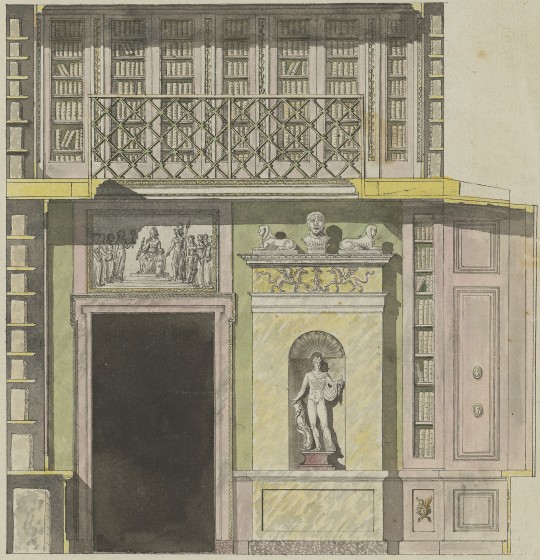

Library interiors in Rosersberg Palace, Sweden (watercolours c. 1797)
#architecture#interior#interior design#neoclassical architecture#classical architecture#library#reading#books#library interior#watercolor#neoclassicism
242 notes
·
View notes
Text

Library designs by Erik Palmstedt (Swedish, 1741-1803)


18 notes
·
View notes
Text

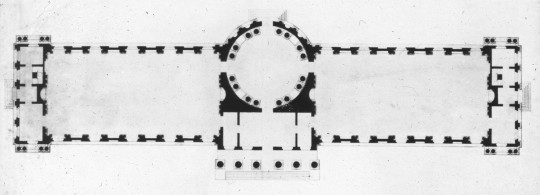

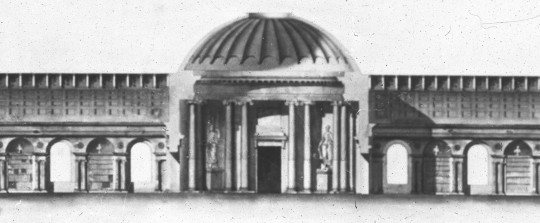
Proposal for a Neoclassical library, by Axel Nyström (Swedish, 1793–1868)
#architecture#library#books#reading#neoclassical architecture#floor plan#history of architecture#axel nyström
42 notes
·
View notes
Text
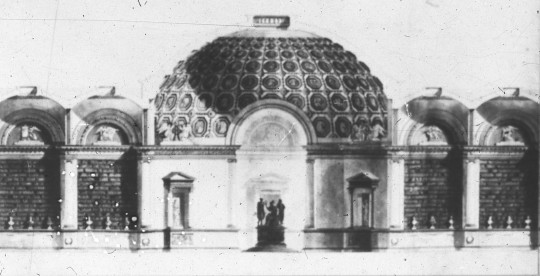

Proposal for a Neclassical library, by Carl Fredrik Sundvall (Swedish, 1754-1831)
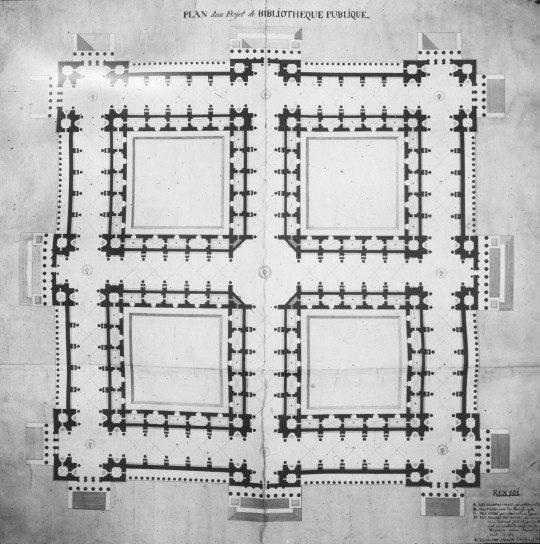
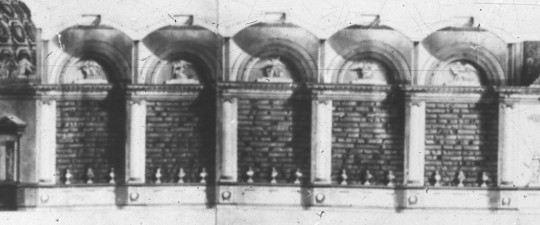
#architecture#neoclassical architecture#carl fredrik sundvall#library#history of architecture#floor plan#art#reading#books
23 notes
·
View notes
Text
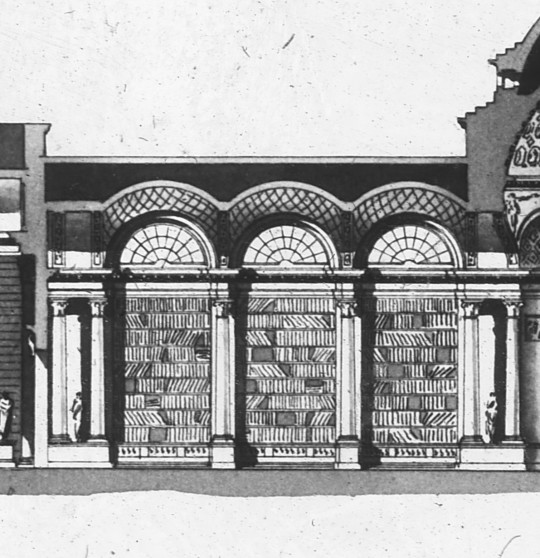
Design for a Neoclassical library, by Erik Palmstedt (Swedish, 1741-1803)


33 notes
·
View notes
Text
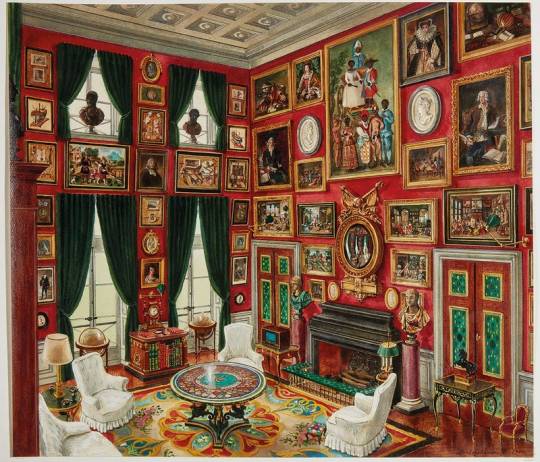
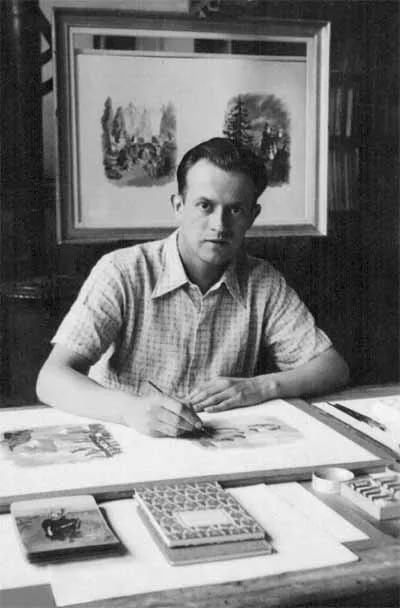

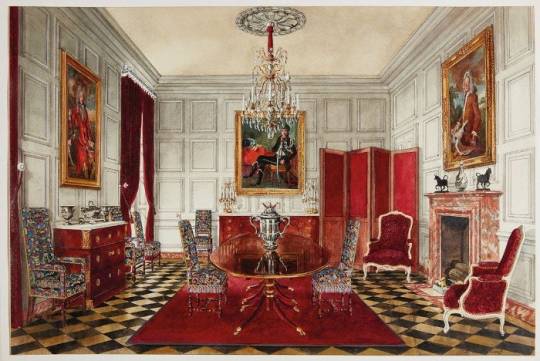
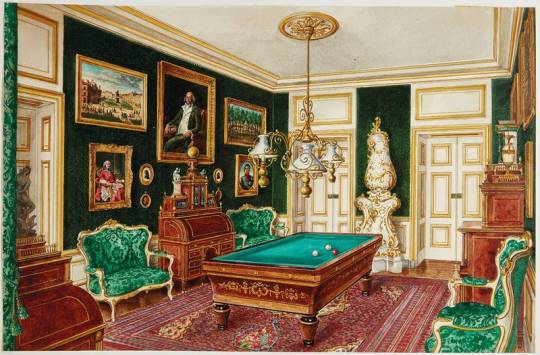
Alexandre Serebriakoff, watercolours of Château de Groussay (France). Serebriakoff (1907-1995) was a Ukrainian-born watercolour artist who lived and worked most of his life in France. He developed contacts with French and English high society, and made watercolour albums depicting the richly furnished interiors of French chateaux and London flats, so-called Zimmerbilden or portraits d'intérieur. It was once a popular and charming genre of art, of which older examples are often of interest for the cultural historian, but has faded from the mainstream. Serebriakoff was one of the last masters of the genre.
Pics from here, which also provides an interesting read.
#Alexandre Serebriakoff#watercolour#architecture#interior#vintage interior#chateau#zimmerbild#history of art#ukrainian artist#ukrart#french art
182 notes
·
View notes
Text
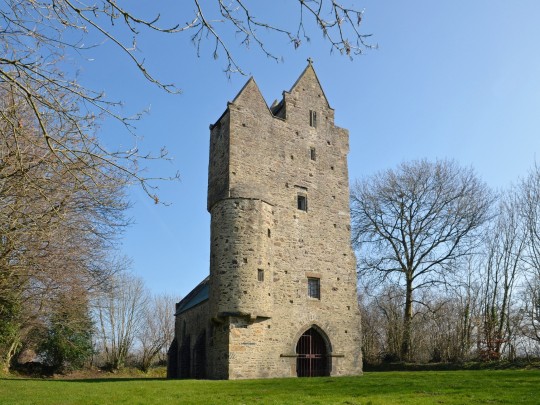
The Hermitage of Saint Gerbold in Normandy, France. Built as a church in the Middle Ages, it was transformed into a hermit's dwelling - a hermitage in the true sense of the word - in the 17th century. The last hermit died in 1840.
181 notes
·
View notes
Text
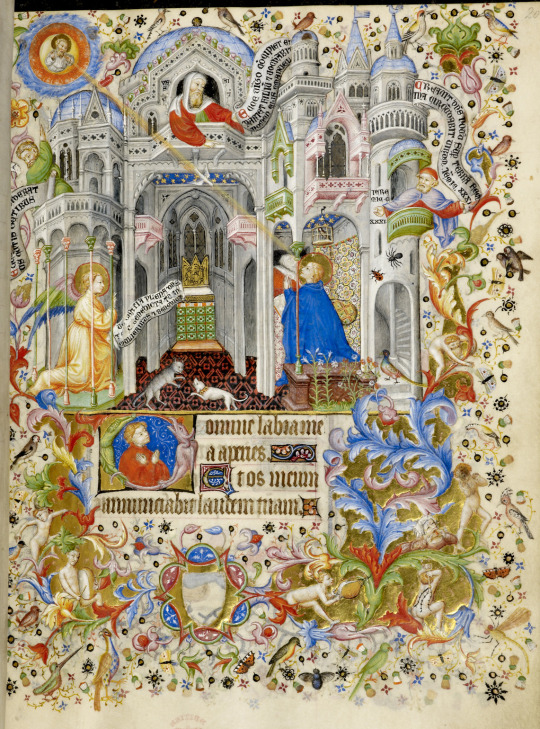
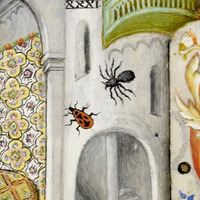
The Master of the Brussels Initials is the notname of an artist who decorated gorgeous illuminated manuscripts for royalty like Charles the Noble and the Duke of Berry - perhaps the most extravagant book collector ever to have lived.
This artist, active at the turn of the 14th to 15th century, is notable not only for making works of great beauty, and having an important role in the development of late Gothic art, but also for being a keen observer of nature. The small bug in this full-size miniature depicting the Annunciation, is perfectly identifiable as a firebug, Pyrrhocoris apterus. In fact, G. Evelyn Hutchinson, the "father of modern ecology", wrote an entire fascinating article about the Master of the Brussels Initials and insects depicted by him, available here. He argued that this was more than a curiosity, it was an example of a development within manuscript decoration towards a more naturalistic world view, "part of the same movement that produced the contemporary studies of optics and mechanics in England, France and Germany" and which continued with the production of formal natural history treaties in the 16th century.
So, while it may not have been the only such seed, one impulse to the modest beginning which would eventually give us modern science could be said to be found in the beautiful decorations of medieval manuscripts.
#books#library#reading#illuminated manuscript#illumination#medieval#medieval art#medieval manuscripts#master of the Brussels Initials#history#book history#science#insects#firebug#bibliophile#bibliophilia#old books
73 notes
·
View notes
Photo


One last bookplate which is so charming I have to provide some comments (See the other ones here, here and here.)
This is the bookplate (or ex libris) of German politician, lawyer and Enlightenment figure Johann Daniel von Olenschlager (1711-1778), It depicts an ideal of a library which is made clear already in the Latin motto inscribed in the elaborate, Rococo frame, which translated into something like “I wish to be both useful and to be of enjoyment.”
The depicted library room is an open loggia covered with a roomy vault. The side walls are entirely covered by bookshelves, giving that pleasant, comfortable impression of being lost in a sea of reading material. The floor, we may imagine, is a cool stone floor - because at the rear end, the loggia opens generously to a gorgeous Baroque garden. The shadows falling from the pillars to the left, the fountain trickling and the garland having from the roof to frame the entrance all give away a vague feeling of an eternal summer day. Pruned trees, a gravel path and a balustraded stair emanate an atmosphere of peace and order. Two figures move towards us from the garden; we can almost hear the bright voices of our friends approaching. In a few moments they will be with us, laughingly teasing us to finally drop our books and get out into the sunshine with them. I wouldn’t mind at all.
#book plate#bookplate#ex libris#exlibris#rococo#vintage illustration#old library#library#reading#old books#books#vintage interior#architecture
142 notes
·
View notes
Photo
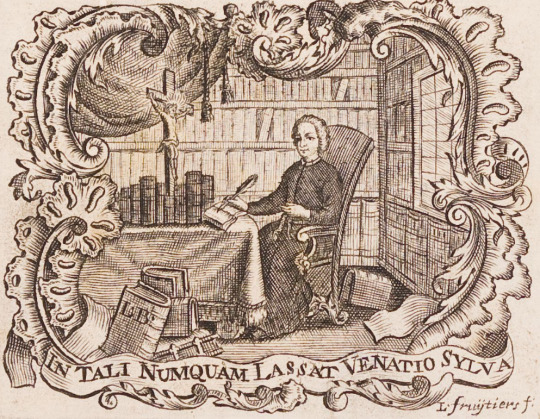
A third (see also here and here) very charming bookplate or ex libris (mark of book ownership) is this, the bookplate of Louis or Ludwig (or quite possibly Lodewijk) Bosch, priest in Temse, modern day-Belgium. It is from the first half of the 18th century.
The owner displays himself seated in an ornate but comfortable char by the table, covered in a thick, frilled tablecloth, and is busy jotting some recent thought or discovery down in a notebook. All around him are books. The walls are covered by bookshelves from floor to ceiling, bar the window behind the priest that gives light enough to read and write, and books are also on the table and even on the floor. The scene is framed in a Rococo-style frame, a bit pompous but also playful.
The Latin motto at the bottom translates into something like “a hunt in such a forest never wearies” - a phrase that will bring a smile to anyone who has ever had the pleasure of diving in after some faint trace from some fascinating subject in a well-equipped library, and making joyful new discoveries on the way.
Source: +
#ex libris#exlibris#book plate#bookplate#books#book#reading#library#book collecting#old books#vintage illustration#old library
21 notes
·
View notes
Photo
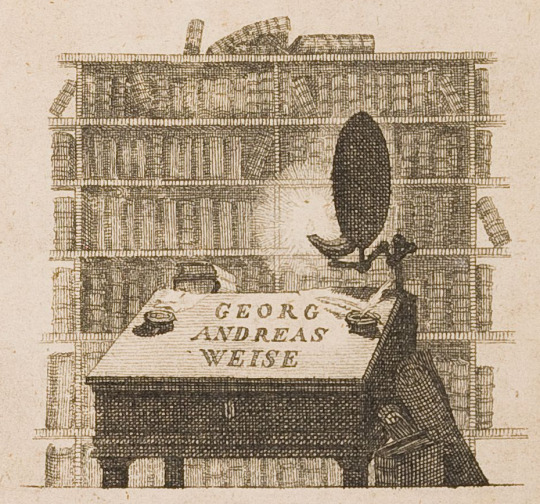
Another (see also my earlier post) very charming ex libris or bookplate is that of Georg Andreas Weise (1737-1792), a German theologian. Curiously, he was born in Astrakhan in Russia.
In any case, his bookplate captures much of the simple, dignified atmosphere of German Neoclassicism and Biedermeier style. It also indicates a serious relationship to books and learning, with the overfull stacks behind the plain but pleasant desk and not least the lit and shaded lamp. Here is the bookplate, it seems to say, of a man perhaps with limited means, but with a great thirst for knowledge and love of books, who would stay up late, reading and working hard, with only the sound of the quill against the paper impeding on that peaceful yet creative atmosphere.
Source: +
#bookplate#book plate#ex libris#exlibris#books#reading#bookshelf#bookshelves#interior#vintage illustration#vintage interior#biedermeier#neoclassicism#book art
36 notes
·
View notes
Photo


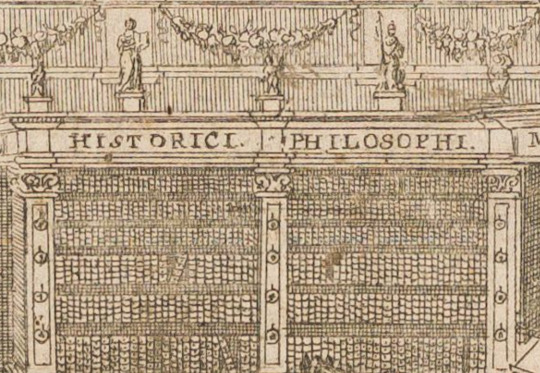
Johann Michael von Loën was a German enlightenment writer and statesman, and the uncle of Goethe. He had a very detailed and elaborate ex libris, or bookplate, which would be pasted on the inside of the front of his books to show that they belonged to him.
It depicts the idealised but not unrealistic library of a wealthy man of the times, with tall bookshelves framed by decorated columns, surmounted by playful festoons and statuettes, probably depicting ancient deities or allegorical figures. Special cabinets hold rare manuscripts, and on their sides hang scientific instruments. The cabinet on the left has an unfolded reading surface, indicating recent use. In the middle of the large room is a generous piece of wooden furniture, perhaps holding reference works, offering a convenient place to display open books and more intricate and expensive technological trinkets - a clock, an amarilly sphere and a globe. At the back, an open door indicates further, perhaps infinite library rooms in succession.
The library is one of richness and grandeur, but also one of utility, charm and comfort - typical for the ideals of the early Enlightenment, and I daresay, quite attractive still today.
Source: +
#library#old library#interior#johann michael von loen#vintage illustration#vintage interior#ex libris#bookplate#enlightenment
104 notes
·
View notes
Text
House in Tournai, Belgium. Architect: Georges De Poore, 1903
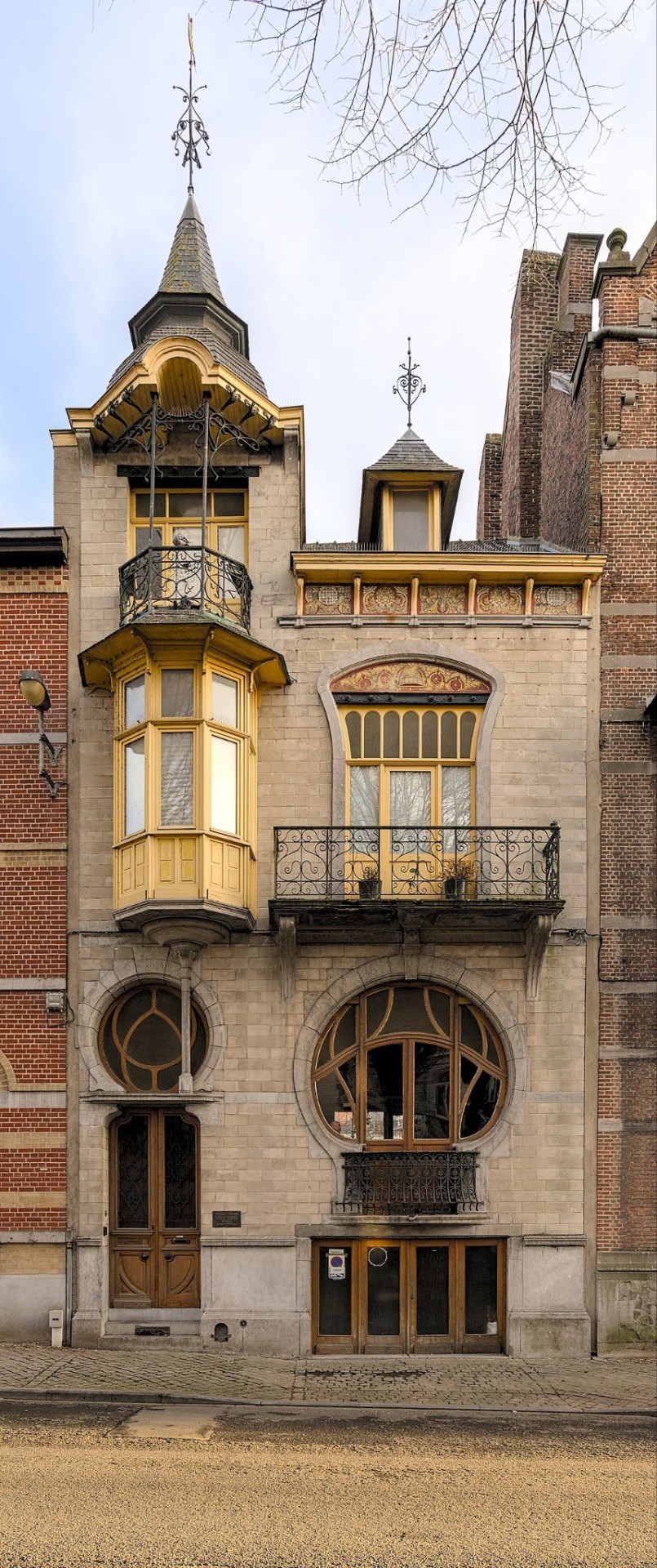
188 notes
·
View notes